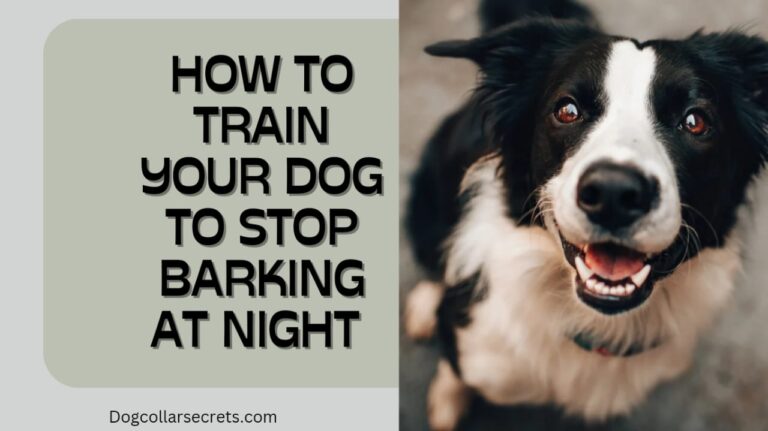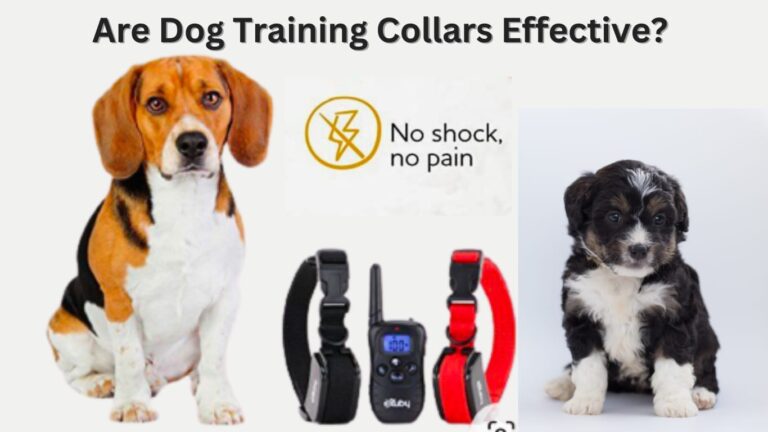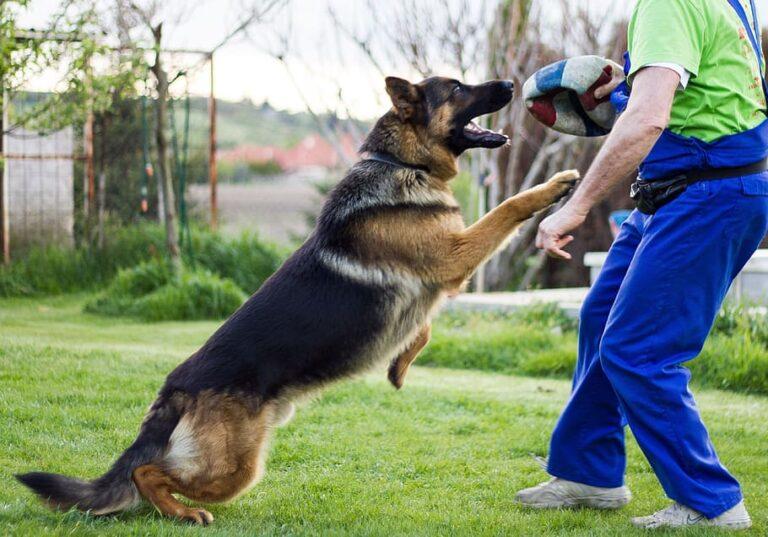How do you break aggression in a dog?
How do you break aggression in a dog?
Dealing with aggression in dogs is a common concern for pet owners, and finding effective strategies to manage and reduce aggressive behavior is crucial for the well-being of both the dog and its human companions. Aggression in dogs can manifest in various forms, such as growling, biting, or barking, and it may be triggered by fear, territorial instincts, or past experiences.
In this article, we will explore practical approaches and tips to address and break aggression in dogs, aiming to create a safer and more harmonious environment for both the canine and its human family. Understanding the underlying causes, implementing positive reinforcement techniques, and seeking professional guidance when needed are key elements in fostering a positive change in a dog’s behavior.
“How do you break aggression in a dog?” will remain our main topic. Besides this, we will explore some other questions.
Now, let’s delve into the answers to the questions surrounding this important topic.
How to stop dog aggression towards other dogs?
How to stop dog aggression towards humans?
Types Of Aggression In Dogs
Aggression in dogs can take on various forms, and understanding the different types is essential for effective management. One common type is Fear Aggression. Dogs may become aggressive when they feel threatened or scared. This could happen in response to loud noises, unfamiliar environments, or encounters with strangers. It’s important to identify and address the specific fears triggering this aggression, working to create a sense of security for the dog.
Territorial Aggression is another type seen in many dogs. They may become protective of their space, whether it’s their home or a favorite spot in the yard. This can lead to aggressive behavior towards perceived intruders, whether people or other animals. Managing territorial aggression involves training and socialization to help the dog become more comfortable with new faces and situations.
Resource Guarding is when a dog becomes possessive over items like food, toys, or even a comfortable resting spot. This type of aggression can manifest as growling or biting when someone approaches what the dog considers its belongings. Addressing resource guarding involves training the dog to associate positive experiences with people approaching their possessions, creating a more relaxed attitude.
In some cases, dogs may display Social Aggression. This type often occurs between dogs and can be related to social ranking or competition for attention. Social aggression may involve behaviors such as snapping, biting, or even fighting. Proper socialization, training, and monitoring can help minimize social aggression, ensuring positive interactions among dogs.
Understanding the specific type of aggression your dog is exhibiting is crucial for developing an effective strategy to address and manage the behavior. It’s advisable to seek guidance from a professional dog trainer or behaviorist for personalized advice tailored to your dog’s unique needs.
Things that will make your dog aggressive
Several factors can contribute to a dog’s aggression, and being aware of these triggers is essential for responsible pet ownership. Lack of Socialization is a common factor that can make dogs more prone to aggression. When dogs aren’t exposed to various people, animals, and environments during their early developmental stages, they may become fearful or anxious in unfamiliar situations, leading to defensive or aggressive behavior.
Poor Training and Lack of Boundaries can also contribute to aggression in dogs. Dogs thrive on structure and consistent rules. Without proper training and clear boundaries, they may not understand what is expected of them, causing confusion and frustration. In such cases, dogs might resort to aggression as a way to communicate or establish their own perceived rules.
Medical Issues can play a role in aggressive behavior. Pain or discomfort due to underlying health problems can make a dog more irritable and reactive. It’s crucial for pet owners to monitor their dog’s health regularly and seek veterinary attention if any signs of discomfort or illness arise.
Negative Experiences and Trauma can leave a lasting impact on a dog’s behavior. Dogs that have faced abuse, neglect, or traumatic events in the past may develop defensive aggression as a coping mechanism. Patience, positive reinforcement, and a supportive environment are key to helping such dogs overcome their past experiences and build trust.
As responsible pet owners, it’s essential to be proactive in providing a nurturing environment, positive training, and regular veterinary care. Addressing these factors can significantly reduce the likelihood of aggression in dogs, fostering a happy and well-adjusted companion. If aggression issues persist, consulting with a professional dog trainer or behaviorist can offer valuable insights and guidance.
Signs of aggression in dogs towards other dogs?
Recognizing signs of aggression in dogs towards other dogs is crucial for preventing conflicts and ensuring the safety of both canine companions and their owners. One common indicator is body language, and paying attention to specific cues can help identify potential aggression. Raised hackles, a stiff body posture, and direct eye contact are signals that a dog may be feeling threatened or ready to display aggressive behavior.
Growling and Barking are vocalizations that often accompany aggressive feelings. If a dog is growling or barking excessively, it may be expressing discomfort, fear, or a desire to establish dominance. Understanding the context and triggers for these vocalizations is essential in assessing the level of aggression.
Snapping or Biting is a more overt sign of aggression and should be taken seriously. If a dog displays these behaviors toward other dogs, it indicates a higher level of hostility and a potential risk for injury. Intervening immediately and seeking professional help to address the root causes of such aggression is crucial to prevent escalation and ensure a safe environment for all dogs involved.
Resource Guarding is another form of aggression that may be directed towards other dogs. This behavior involves protecting valuable resources such as food, toys, or favorite resting spots. Dogs exhibiting resource guarding may show aggression if another dog approaches these items. Managing and addressing resource guarding through positive reinforcement and training can help reduce aggressive tendencies in multi-dog households.
Being proactive in observing and understanding these signs of aggression can aid dog owners in taking appropriate steps to prevent conflicts. If a dog consistently displays aggressive behavior towards other dogs, consulting with a professional dog trainer or behaviorist is recommended to assess the specific triggers and implement effective behavior modification techniques.
How to stop dog aggression towards other dogs?
Addressing dog aggression towards other dogs requires a thoughtful and consistent approach to ensure the safety of both the aggressive dog and its canine counterparts. One effective strategy is positive reinforcement training. By rewarding desirable behaviors and creating positive associations with other dogs, you can encourage your dog to exhibit calmer and more accepting responses. Treats, praise, and toys can be used as rewards during controlled interactions.
Gradual and Controlled Exposure is essential in helping your dog become more comfortable around other dogs. Start with controlled introductions in a neutral environment, allowing the dogs to observe each other from a distance. Gradually decrease the distance over time as their comfort levels increase. This gradual exposure helps build positive associations and reduces anxiety or fear that may contribute to aggression.
Obedience Training plays a crucial role in managing dog aggression. Teaching basic commands like “sit,” “stay,” and “leave it” can give you better control over your dog in various situations. Practice these commands during walks or encounters with other dogs to redirect your dog’s focus and reinforce positive behavior.
Seek Professional Help: If your dog’s aggression towards other dogs persists or escalates, consulting with a professional dog trainer or behaviorist is highly advisable. They can assess your dog’s specific situation, identify underlying causes, and provide personalized guidance and training plans. In some cases, group training classes may also be beneficial for improving socialization skills in a controlled environment.
It’s important to approach the issue with patience and consistency, understanding that behavior modification takes time. Additionally, always prioritize safety by using a sturdy leash and a well-fitted muzzle if necessary during interactions with other dogs. With the right training and positive reinforcement, many dogs can learn to overcome aggressive tendencies and coexist peacefully with their canine companions.
Signs of dog aggression towards humans
Recognizing signs of dog aggression towards humans is crucial for ensuring the safety of both the individuals involved and the canine companion. One clear indicator is body language. Dogs may exhibit stiff posture, raised hackles, and intense staring as signs of discomfort or aggression. Paying attention to these cues can help identify potential issues before they escalate.
Growling and Barking are vocal expressions of a dog’s discomfort or perceived threat. If a dog growls or barks when approached by a person, it may signal fear, anxiety, or an attempt to establish personal space. These vocalizations should be taken seriously and respected as a warning sign.
Biting or Snapping is a more overt display of aggression. If a dog resorts to biting or snapping at humans, it indicates a heightened level of fear or stress. Understanding the context in which these behaviors occur is crucial in addressing the root causes. If a dog consistently shows aggressive tendencies towards people, seeking professional help is recommended to implement behavior modification strategies.
Resource Guarding can also contribute to aggression towards humans. This behavior involves protecting valuable resources such as food, toys, or sleeping areas. Dogs may show aggression if someone approaches these items. Managing resource guarding through positive reinforcement and training can help mitigate aggressive tendencies and create a more harmonious relationship between dogs and humans.
If you observe signs of aggression in your dog towards humans, it’s important to prioritize safety and seek professional assistance. A certified dog trainer or behaviorist can assess the specific triggers and provide guidance on implementing effective behavior modification techniques. It’s crucial to address aggression promptly and consistently to create a safe and positive environment for both your dog and the people around them.
How to stop dog aggression towards humans?
Addressing dog aggression towards humans is a serious matter that requires careful attention and a patient approach. The first step is to ensure safety for everyone involved. If your dog is displaying aggressive behavior, use caution and consider using a muzzle during training sessions. Safety measures like leashes and proper supervision can help prevent potential incidents.
Professional Training and Evaluation are crucial components of addressing aggression towards humans. Consult with a certified dog trainer or behaviorist who can assess the specific triggers and underlying causes of the aggression. A professional can create a tailored training plan to modify the dog’s behavior, addressing the root issues that contribute to aggression. This may involve positive reinforcement techniques and desensitization exercises to change the dog’s response to certain stimuli.
Establish Clear Boundaries and Consistent Rules within your home. Dogs thrive on routine and structure, so providing them with clear expectations can help reduce anxiety and prevent aggressive behavior. Ensure that all family members are on the same page regarding rules and interactions with the dog. Consistency in training and daily routines can contribute to a more secure and predictable environment for your dog.
Socialization and Exposure to Positive Experiences can help reshape your dog’s perception of humans. Gradually expose your dog to different people in a controlled and positive manner. Use treats, toys, and praise to reward calm behavior around humans. This gradual exposure, combined with positive reinforcement, can help your dog build confidence and reduce fear or anxiety that may contribute to aggression.
Remember that addressing aggression in dogs is a process that takes time, patience, and consistency. Seek professional guidance, and be committed to the training plan provided. It’s essential to approach the issue with empathy and a focus on creating a safe and positive relationship between your dog and the people they interact with.
Lets delve into the main topic of this article:
How do you break aggression in a dog?
Addressing and breaking aggression in a dog involves a thoughtful and consistent approach, prioritizing safety and well-being for both the dog and its human companions.
- Identify Triggers:
- Observe your dog’s behavior to pinpoint specific situations or stimuli that lead to aggression. Common triggers include loud noises, unfamiliar people or animals, or territorial instincts. Recognizing these triggers is the first step in developing an effective training plan.
- Positive Reinforcement Training:
- Positive reinforcement involves rewarding your dog for exhibiting desired behavior. When your dog displays calm and non-aggressive responses, use treats, praise, or toys to reinforce the positive actions. This creates a connection between good behavior and positive outcomes, encouraging the dog to repeat those behaviors.
- Socialization:
- Controlled exposure to various people, environments, and situations is essential for reducing fear-based aggression. Gradually introduce your dog to new experiences, ensuring that each interaction is positive. This helps your dog build confidence and become more comfortable in different settings.
- Desensitization:
- Desensitization involves gradually exposing your dog to their triggers in a controlled and positive manner. For example, if your dog is reactive to other dogs, start by observing them from a distance and progressively decrease the distance over time. This gradual exposure helps diminish the sensitivity to specific stimuli.
- Obedience Training:
- Teaching basic commands like sit, stay, and come provides you with better control over your dog in various situations. When faced with potential triggers, having the ability to redirect your dog’s attention and command their focus can prevent or minimize aggressive behavior.
- Avoid Punishment:
- Punishment can have negative consequences, potentially escalating aggression or creating fear in your dog. Instead of punishing undesirable behavior, focus on reinforcing positive actions. This positive reinforcement approach helps build a trusting relationship between you and your dog.
- Provide a Safe Space:
- Create a designated safe and quiet space where your dog can retreat when feeling stressed or threatened. Equip this space with comfortable bedding, toys, and treats. This area serves as a sanctuary for your dog, allowing them to calm down and feel secure when needed.
- Consistency:
- Consistency in training methods and rules is crucial for your dog to understand expectations. Ensure that all family members or caregivers follow the same guidelines to avoid confusion. Consistency provides a structured environment, which is reassuring for your dog.
- Professional Assistance:
- If your dog’s aggression persists or worsens, seek professional help from a certified dog trainer or behaviorist. These experts can assess your dog’s specific situation, identify triggers, and develop a personalized training plan to address the underlying causes of aggression.
- Medical Checkup:
- Schedule a thorough checkup with your veterinarian to rule out any potential health issues contributing to aggression. Pain or discomfort due to underlying medical conditions can influence a dog’s behavior. Addressing these health concerns ensures a comprehensive approach to behavior modification.
Remember, breaking aggression in a dog is a process that requires patience, consistency, and a tailored approach based on your dog’s unique needs and triggers.
Conclusion
“How do you break aggression in a dog?” is a pivotal question for pet owners seeking effective strategies to address concerning behavior in their canine companions. In conclusion, the process involves a deliberate combination of observation, positive reinforcement, and professional guidance. Identifying specific triggers and implementing positive reinforcement training create the groundwork for reshaping a dog’s behavior. Socialization, desensitization, and consistent obedience training contribute to a secure and controlled environment, emphasizing the importance of avoiding punishment and providing a designated safe space.
Seeking professional assistance when necessary and conducting a thorough medical checkup ensure a comprehensive approach to tackling aggression. With patience and consistency, these strategies facilitate the development of a positive and trusting relationship between pet owners and their dogs, fostering a happier and more harmonious coexistence.




